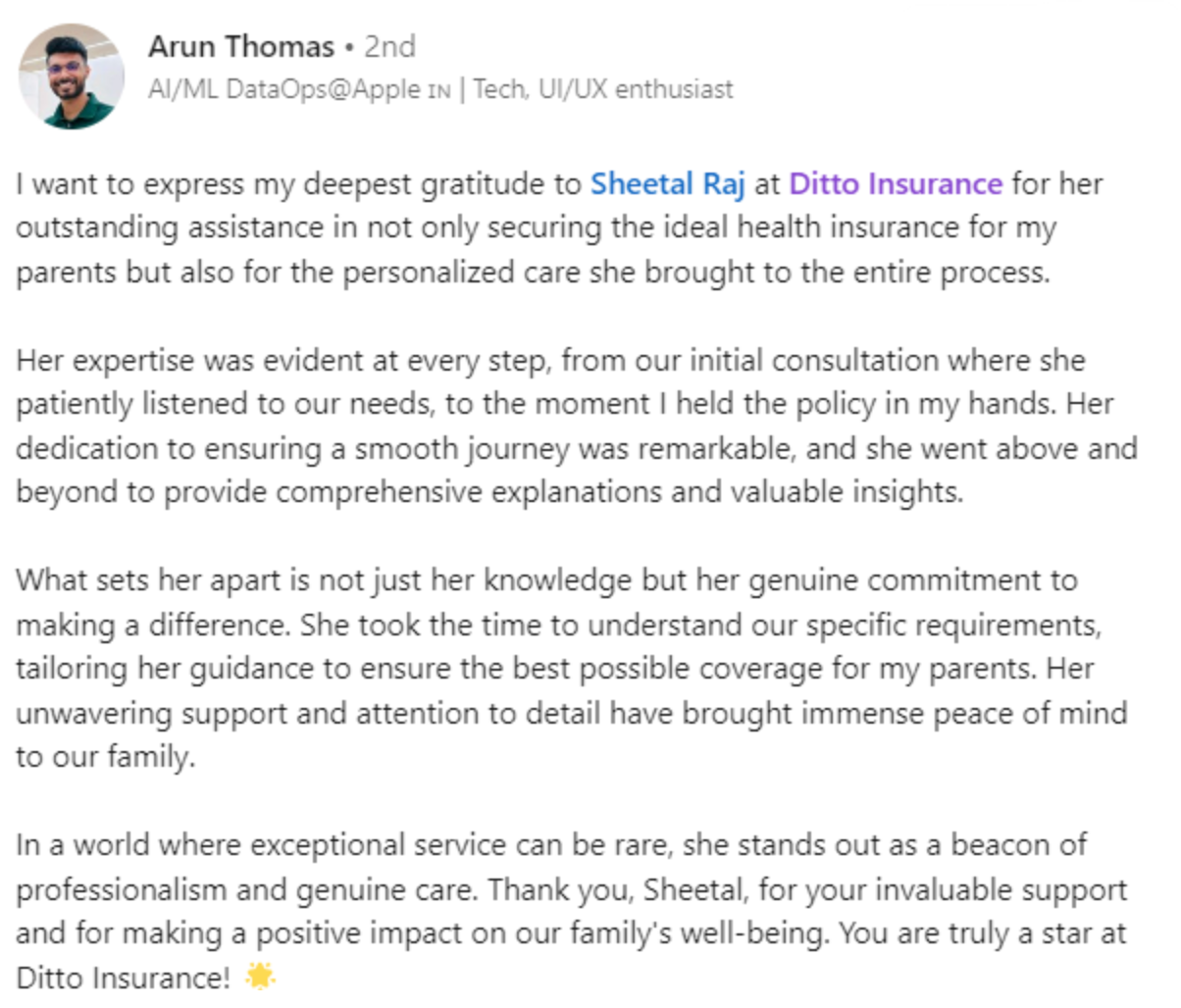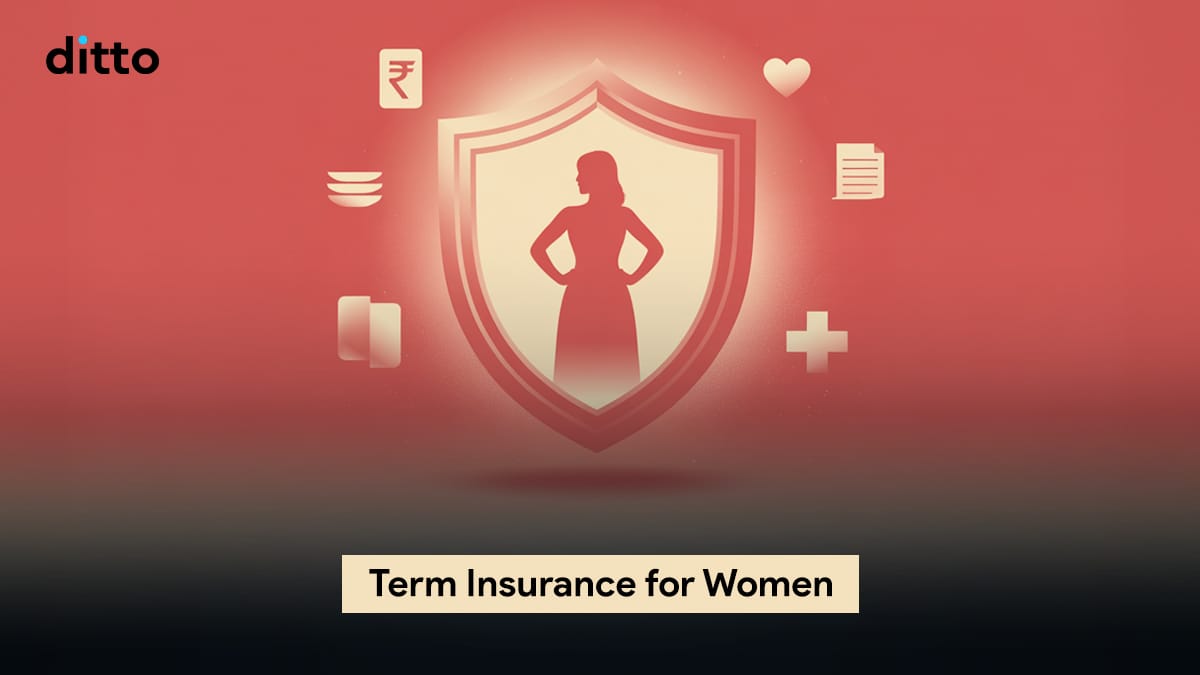| What is Term Insurance for Women? Term insurance for women is a pure protection plan that provides financial security to a woman’s family in case of her untimely death during the policy term. It offers high coverage at affordable premiums, often up to 15% lower than men’s premiums, making it a cost-effective way for women to safeguard their family’s financial future. |
Women, whether they are professionals or homemakers, play a vital role in ensuring their family’s financial well-being. Yet, in India, only 19% of women have life insurance in their own name, compared to 49% of men. This gap often stems from misconceptions about financial dependence and limited awareness of the importance of protection planning.
Term insurance offers women a thoughtful and affordable way to safeguard their family’s future. By paying a modest annual premium, it provides financial security to loved ones in case of an unfortunate event. Additionally, women benefit from lower premiums, often up to 15% less than men, owing to higher life expectancy, lower mortality risk, and insurers’ initiatives to encourage greater financial inclusion among women.
In this article, we’ll explain term insurance for women, including:
- How does term insurance for women work?
- Why term insurance for women matters?
- What is term insurance for women?
Why Term Insurance Matters for Women?
Here’s why every woman should consider a term plan:
1. Income Protection: If you’re an earning member, your income likely supports essential expenses like rent, medicines, education, and daily needs. A term plan ensures your loved ones can continue meeting these costs even in your absence.
2. Financial Support for Dependents: Homemakers play a crucial role in managing the household and caring for the family. In their absence, families might require support for childcare or household responsibilities, and term insurance can help ensure that these needs are met without financial strain.
3. Debt Security: For women who have taken any type of loan, whether for a home, vehicle, or education, a term insurance policy can help ensure that any outstanding obligations are met, offering peace of mind that their family will be cared for even in unexpected circumstances.
4. Tax Advantages: Under the old tax regime, premiums paid for term insurance qualify for deductions under Section 80C (up to ₹1.5 lakh annually), and policy payouts are tax-free under Section 10(10D).
5. Lower Premiums: Women pay up to 15% lower premiums than men for the same coverage, thanks to longer life expectancy and lower claim-payout probability. These lower premiums remain fixed throughout the policy term, and the recent GST removal on individual life and health insurance policies has made plans even more affordable.
For example, A 30-year-old woman earning ₹12 lakh per year can purchase an HDFC Click 2 Protect Supreme ₹1 crore term plan till the age of 60 for just ₹922 per month, as compared to a male of a similar profile paying ₹1,085 per month.
How Term Insurance Works for Women?
Term insurance for women functions the same way it does for men; you pay regular premiums, and if you pass away during the policy term, your nominee receives the sum assured as either a lump sum or a recurring income.
However, there are a few subtle but important differences:
1. Premium Calculation: Premiums are determined by factors like age, income, health, and lifestyle habits. Since women generally have longer life expectancies.
2. Income Eligibility: For working women, the maximum cover amount is based on income proofs such as salary slips, income tax returns, or GST filings, along with their age and education. These documents help insurers assess financial eligibility and coverage limits.
3. For Homemakers: In the case of homemakers, insurers consider the spouse’s income or existing term plan to determine eligibility. Typically, the wife’s sum assured can go up to 50% of her husband’s coverage.
4. Policy Tenure: Term insurance plans typically offer coverage ranging from 10 to 40 years. We recommend choosing coverage till age 60-70 years, or at least until your dependents are financially independent and any outstanding loans are repaid. Some plans, like ICICI Prudential iProtect Smart Plus, also offer whole-life protection up to age 99/100.
Friendly reminder: It’s easy to get lost comparing policies and premiums. Instead of spending hours on it, why not get personalized insurance advice from Ditto? We offer free consultations with zero spam! Just 30 minutes to clarify all your doubts. So book a call now.
Types of Term Insurance Plans for Women
Women today have access to a variety of term insurance options, each designed to suit different lifestyles, income levels, and financial goals. Choosing the right plan depends on factors like your occupation, family responsibilities, and long-term commitments.
Here’s a quick look at the major types of term insurance plans and how they work:
1) Level Term Plan
Offers a fixed sum assured and premium throughout the policy term. Ideal for women who prefer predictable costs and steady coverage.
2) Increasing Term Plan
The coverage increases over time, helping you beat inflation and rising family expenses. Suitable for young earners expecting higher financial responsibilities in the future.
3) Decreasing Term Plan
The sum assured reduces over the years, perfect if you have a declining liability, such as a home or car loan.
4) Convertible Term Plan
Let's you convert your term policy into a permanent life plan later. Ideal if you want flexibility as your financial situation evolves, though such options are relatively rare in India.
5) Renewable Term Plan
Allows you to extend your policy once the initial term ends. While it offers renewal flexibility, this option is generally not relevant or commonly available in India.
6) Term Plan with Return of Premium (TROP)
Refund all paid premiums if you survive the policy term. Premiums are higher, but they ensure you don’t “lose” your money. A good fit for those seeking both protection and savings.
Key Features of Term Insurance for Women
Modern insurers offer term plans with features tailored to women’s diverse financial roles and health priorities.
Here are some of the most important ones:
- Inbuilt Features: Many plans include valuable built-in benefits like Terminal Illness Cover, Instant Payout on Claim Intimation, Premium Break, Special Exit Benefit, and Health Management Services to support holistic financial and wellness needs.
- Comprehensive Riders: Enhance your policy with riders such as Waiver of Premium (WOP), Critical Illness, Disability Cover, or Childcare Benefit for added protection.
- Flexible Payout Options: Choose how your family receives the benefit, as a lump sum, regular income, or a combination of both, based on their financial needs.
- Higher Cover at Lower Premiums: Women enjoy comparatively lower premium rates, allowing them to access higher coverage for the same cost.
Term insurance for women today goes beyond basic protection. It is a flexible, empowering safety net designed to evolve with life’s changing responsibilities and goals.
When Should You Buy Term Insurance for Housewives?
Homemakers may not earn a salary, but their contribution to the household, managing finances, childcare, and home responsibilities, holds immense economic value. In their absence, replacing these services could place a significant financial burden on the family.
While many homemakers don’t have a steady personal income, several insurers today offer limited-term insurance cover for housewives, provided certain eligibility conditions are met. These include the age and education of the housewife, medical underwriting, and the income of the spouse, along with a minimum term plan cover of 1–2 crores for the spouse. Some insurers also offer term plans for NRI housewives with coverage up to 2 crores.
| Did You Know? You have a 30-day free-look period to review your policy and cancel it if needed, with a refund provided after standard deductions for medical tests and stamp duty. Insurers are required to settle death claims promptly, within 15 days if no investigation is needed, or within 45 days if an investigation is conducted. Any delays are subject to interest as per IRDAI regulations. After 3 years, the policy is mostly incontestable, except in proven fraud cases under Section 45 of the Insurance Act, 1938. |
Things to Consider Before Buying Term Insurance for Women
Before finalizing a plan, consider the following essential factors:
- Sum Assured and Policy Tenure: Use a term insurance calculator to determine an appropriate sum assured based on your lifestyle, outstanding debts, number of dependents, and inflation, with a general guideline of 10–15 times your annual income.
Opt for a longer policy tenure, ideally up to retirement or age 60–70, to ensure comprehensive protection, as younger buyers benefit from lower premiums and extended coverage.
The good news is that premiums do not increase proportionately with a higher sum assured. For example, consider Axis Max Life Smart Term Plan Plus for a 35-year-old female with coverage until age 70:
Premiums for Axis Max Life Smart Term Plan Plus
Key Insight: As the sum assured increases, the effective cost per ₹1 crore always decreases, making higher coverage more cost-effective.
- Premium Payment Term (PPT) and Frequency: Check the available premium payment options, such as monthly, quarterly, annual, or single-pay, and choose one that aligns with your cash flow and budgeting preferences. Paying annually is often considered the most cost-effective option, as it may attract discounts and reduce administrative effort compared to more frequent payments.
- Riders: You can enhance your term plan with riders such as a Critical Illness Rider covering female-specific cancers, heart, or kidney diseases, a Waiver of Premium (WOP) in case of disability, Childcare, or Education Benefits.
- Insurer Metrics: Evaluate an insurer’s reliability by considering the Claim Settlement Ratio (CSR), preferably above 97%, complaint volume (lower the better), annual business volume, and solvency ratio, ideally above 150%.
Women Term Plan Buyers by Income Profile
Why Talk to Ditto for Term Insurance?
At Ditto, we’ve assisted over 8,00,000 customers with choosing the right insurance policy. Why customers like Arun below love us:

✅No-Spam & No Salesmen
✅Rated 4.9/5 on Google Reviews by 15,000+ happy customers
✅Backed by Zerodha
✅Dedicated Claim Support Team
✅100% Free Consultation
Confused about the right term insurance for women? Speak to Ditto’s certified advisors for free, unbiased guidance. Book your call now, slots fill up fast!
Term Insurance for Women: How to Make the Right Choice? (Ditto’s Take)
When selecting term insurance, focus on your individual financial goals and responsibilities rather than relying on generic advice. Ensure that your plan reflects your role, whether you earn, manage a household, or run a business, and provides adequate protection for your family. Define the purpose of your cover, align the policy tenure with major life milestones, and include essential riders such as critical illness or waiver of premium for enhanced protection. Be sure to clearly specify your nominees and their respective percentage of benefit so your loved ones can access the claim without complications. Finally, review the insurer’s claim settlement record to ensure you are choosing a reliable provider.
It’s easy to get lost comparing policies and premiums. Instead of spending hours on it, why not get personalised insurance advice from Ditto? We offer free consultations with zero spam! Just 30 minutes to clarify all your doubts. Book a call now!
Frequently Asked Questions (FAQs)
Do women need term insurance?
Yes, every woman should consider term insurance, whether earning or not. It provides for your family if you’re gone, and the lower premiums and tailored riders make it a smart investment.
How much term insurance coverage do women need?
Consider debts, children’s needs, ongoing family expenses, and your hidden service value (for homemakers). Most experts recommend a coverage of 10-15x your annual income or at least enough to clear all outstanding liabilities and support dependents for 15–20 years.
Can housewives buy term insurance?
Yes, many insurers offer limited-term plans for housewives, provided their spouse is adequately insured and eligible. Criteria include a cap on the sum assured (usually up to ₹50 lakh or 50% of the husband’s cover), and the wife needs to be a graduate.
Is critical illness cover important for women’s term insurance?
Absolutely. Female cancers (breast, cervical, ovarian) and pregnancy complications are becoming more common. Riders can provide lump-sum payouts if diagnosed, helping with expensive treatments without straining family finances.
Can I buy term insurance during pregnancy?
Insurers may postpone applications if a woman is in her 2nd or 3rd trimester, typically waiting 3–6 months after delivery. Applications may be considered during the 1st trimester, provided full and accurate disclosure of medical history is made.
Last updated on:










